|
Flint Hills - Spring Burning
Walking through the landscape
blackened by a prairie fire is a special experience. The smell of
smoke still hangs in the air, but it is seldom overpowering. Most of
the plant material has burned, but occasional survivors give cause
for contemplation. Underneath, the true nature of the Flint Hills is
finally revealed. White rocks bloom in profusion from the charred
ground. These rocks are a major reason why the Flint Hills have not
been plowed to the same degree as land further east or west. These
boulders of chert won't stay visible for long, and all but the
largest will soon be rehidden by the grasses that are preparing to
burst forth in brilliant greens. Among the rocks, occasional
antlers, bones, teeth, and other treasures also await discovery.
Fire is a great friend of the
tallgrass prairie. In a climate where precipitation is adequate for
a scrubby forest to grow, it is only fire that keeps the grasses in
control. The following photographs show a typical transition from
grass to spring regrowth.
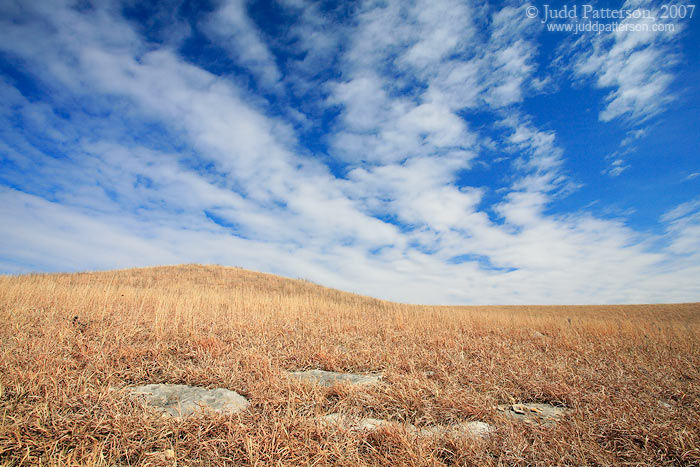
The early spring grasses still
stand, but the winter weather has made sure that they no longer
reach the same heights that they did back in their October peak.
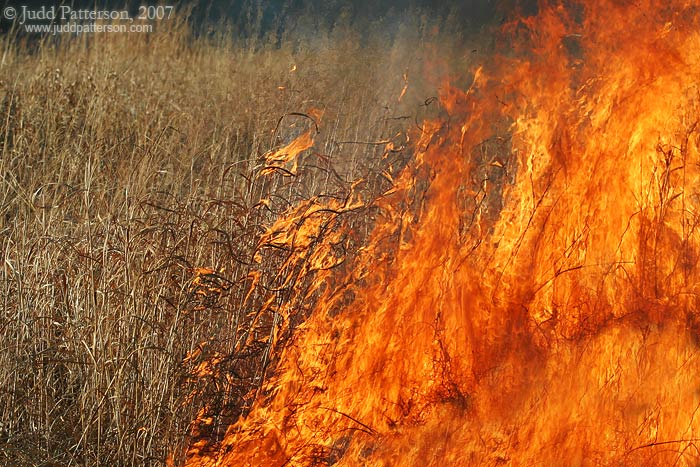
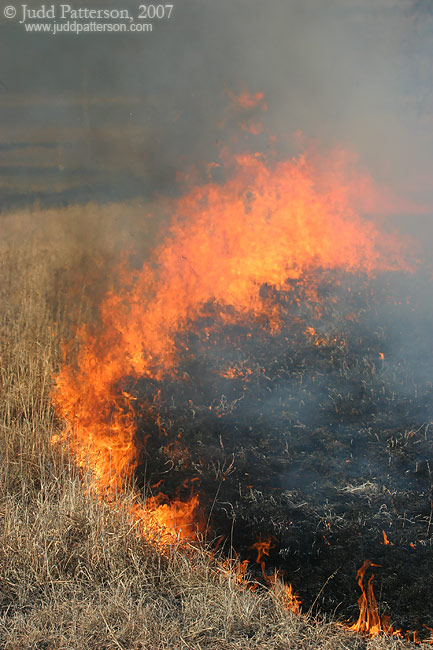
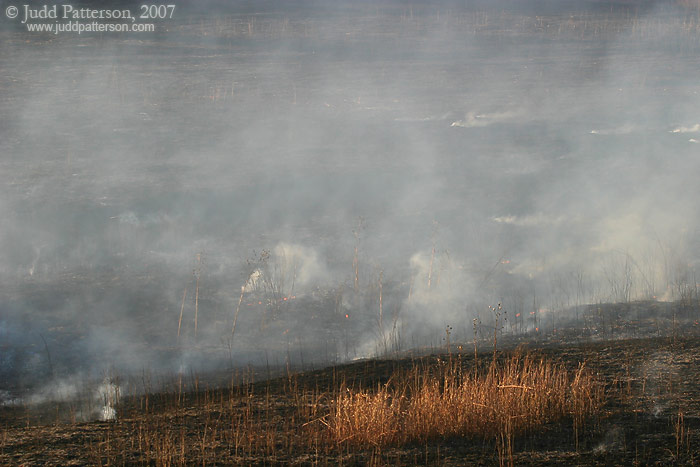

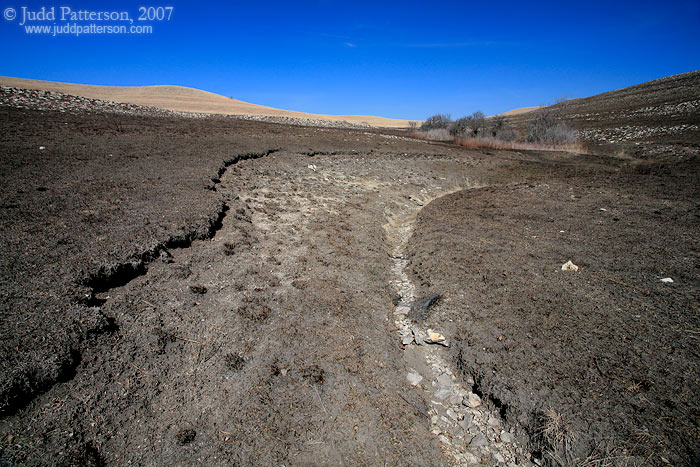

The Flint Hills revealed
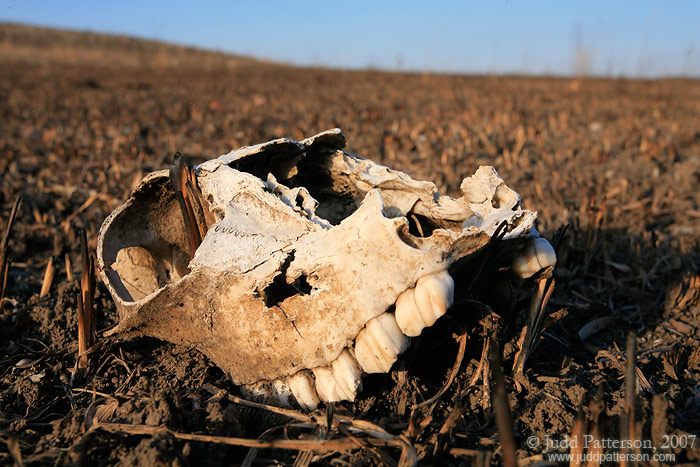
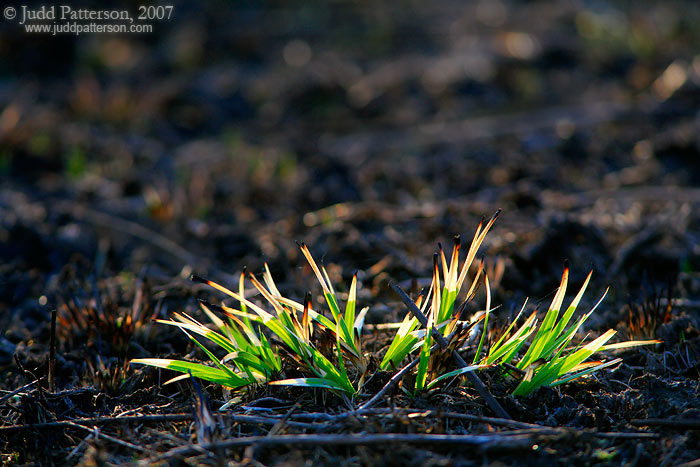
Arising Green
to be continued...
Spotlight Archive
|